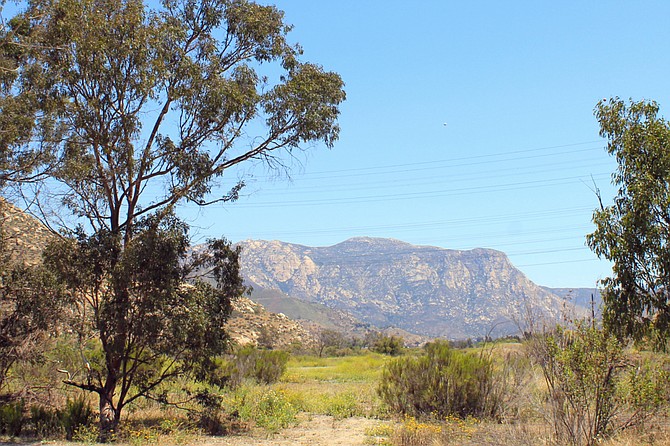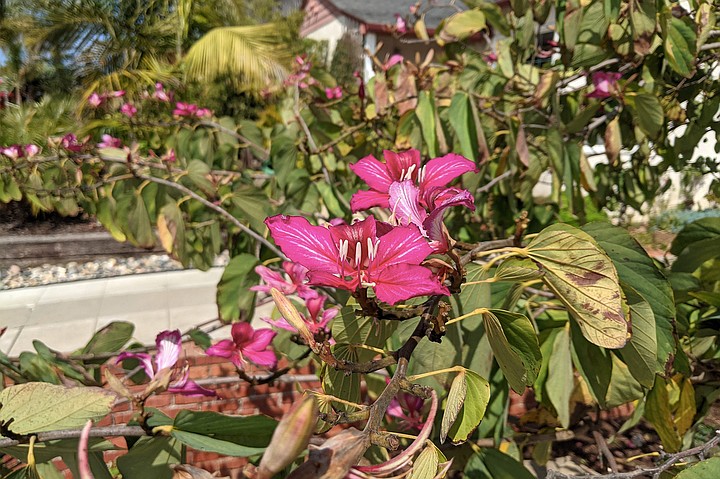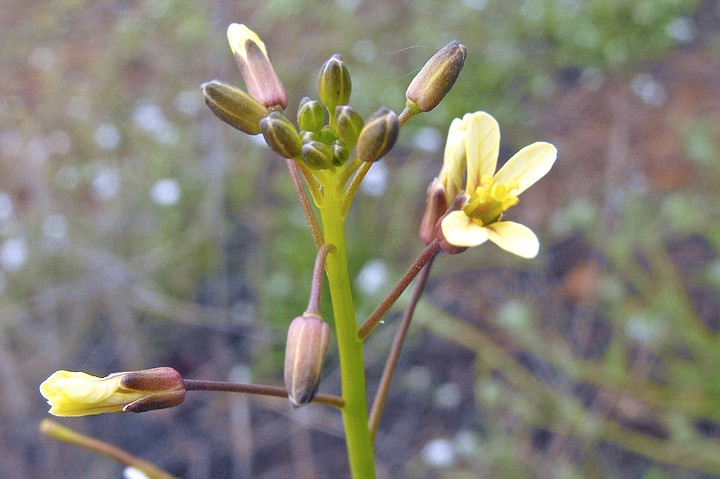 Facebook
Facebook
 X
X
 Instagram
Instagram
 TikTok
TikTok
 Youtube
Youtube

The Annual Green-to-Golden Transition of San Diego’s wild grasslands typically starts during early April — though this year, late rains and a cold winter may lengthen the process. North-facing hillsides and canyon slopes retain the green color longer, as they are less exposed to drying sunshine. Locally, most of the wild grasses are naturalized (non-native) annuals, the seeds of which were introduced along with hay and other grains brought in by the Spaniards during the 18th and 19th centuries. But some of the mountain meadows have remnants of native grasses, which remain more or less green almost year-round. These rare native grasslands can be found in certain parts of Cuyamaca Rancho State Park and are more widely distributed at the Santa Rosa Plateau Ecological Reserve in the Santa Ana Mountains west of Temecula.

Orchid Trees, now at their flamboyant best in front yards and public spaces throughout the city, are showing off their large, orchid-like flowers in shades of pink, purple, and maroon. Orchid trees thrive in areas with a mild winter climate, hence their popularity in Hawaii, Southern California, and Arizona.

Mustard, a non-native plant that is more like a weed than a wildflower, is blooming profusely on grassy slopes all along the coastline of San Diego County. On certain hillsides with moist ground, mustard plants reach ten or more feet in height. An old story, probably apocryphal, tells of the early padres scattering mustard seed along the El Camino Real so that the bright yellow mustard blossoms would help them find their way in future spring seasons. More likely, the plant was introduced to western North America in the form of seeds carried in the hay used to feed livestock brought in by the early settlers.


The Annual Green-to-Golden Transition of San Diego’s wild grasslands typically starts during early April — though this year, late rains and a cold winter may lengthen the process. North-facing hillsides and canyon slopes retain the green color longer, as they are less exposed to drying sunshine. Locally, most of the wild grasses are naturalized (non-native) annuals, the seeds of which were introduced along with hay and other grains brought in by the Spaniards during the 18th and 19th centuries. But some of the mountain meadows have remnants of native grasses, which remain more or less green almost year-round. These rare native grasslands can be found in certain parts of Cuyamaca Rancho State Park and are more widely distributed at the Santa Rosa Plateau Ecological Reserve in the Santa Ana Mountains west of Temecula.

Orchid Trees, now at their flamboyant best in front yards and public spaces throughout the city, are showing off their large, orchid-like flowers in shades of pink, purple, and maroon. Orchid trees thrive in areas with a mild winter climate, hence their popularity in Hawaii, Southern California, and Arizona.

Mustard, a non-native plant that is more like a weed than a wildflower, is blooming profusely on grassy slopes all along the coastline of San Diego County. On certain hillsides with moist ground, mustard plants reach ten or more feet in height. An old story, probably apocryphal, tells of the early padres scattering mustard seed along the El Camino Real so that the bright yellow mustard blossoms would help them find their way in future spring seasons. More likely, the plant was introduced to western North America in the form of seeds carried in the hay used to feed livestock brought in by the early settlers.
Comments